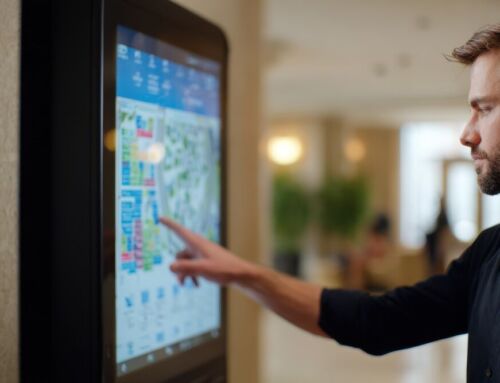Regular readers of this blog will know that we like to wax lyrical about cutting-edge kiosk technology and all the varied and innovative ways it is used. As kiosk vendors, who can blame us? Being right in the middle of how kiosks are evolving and helping more and more businesses transform is very rewarding.
But we also know that it’s not all about the latest features and out-the-box thinking on how kiosks are used. There is also a practical side to what we do which, while perhaps not so glamorous, is nonetheless still critically important.
What we’re talking about here is the nuts and bolts of how you deploy kiosks. Doing so successfully is not just a case of choosing the latest gear, plugging it in and watching the benefits roll in. It’s a sizeable investment that brings with it a fair amount of operational change. There are a range of technological, operational, and strategic considerations you need to weigh up to get right.
So we thought it was high time we tackled this more pragmatic side of self-service. If you want to enjoy the transformational benefits of kiosks, here are four questions to ask yourself as you approach implementation. And as a little bonus, we share some of the answers we can help you find.
1. How will kiosks integrate with the rest of our system?
One of the most important parts of introducing kiosks into your business is ensuring they work effectively with existing systems such as point-of-sale (POS), inventory management, customer relationship management (CRM) and more. Without seamless communication between a kiosk, other hardware and backend systems, you end up with operational silos where, for example, your kiosks and POS run in parallel rather than as a part of a single solution. This can lead to inconsistencies, or else it takes a lot of manual work to keep different parts aligned and avoid inconsistencies. At best you see a drag on efficiency. At worst you get disgruntled customers
Although we specialise in kiosk hardware, we can help our clients choose software platforms that offer proven compatibility with existing systems. We also specialise in kiosk installation, offering full system integration to help avoid misalignment and ensure smooth deployment.
2. How do I ensure my kiosks deliver the best possible user experience?
It doesn’t matter how clever or groundbreaking a piece of technology is. If it isn’t easy and intuitive to use, or fails to provide a satisfactory user experience in some other way, you’ll never get the benefits you were hoping for. This is especially true with kiosks. They’re all about self-service, or empowering customers to do things for themselves. A poorly designed interface or substandard hardware peripherals are anything but empowering. They’re just plain frustrating.
The answer? User-centric design and customisation. The first rule of kiosk success is always to ask, does this make it easier for my customers to do task X? And there’s no such thing as an off-the-shelf solution for that. You have to customise kiosks to do exactly what your customers need, in the best way possible for them to do it. We support that with our modular kiosk design, ensuring every unit is tailored to a business’s specific needs. We also help with optimising the performance of touchscreens and other components, setting kiosks up to maximise accessibility, and more.
3. Does my kiosk need AI?
As with most technologies, the buzz around AI in kiosks is getting louder and louder all the time. And it is certainly true that AI is helping to take kiosk capabilities to a new level by powering everything from personalised recommendations to real-time identification and authentication.
However, this puts pressure on businesses, who often feel they have to get up to speed with AI right now just to keep up with the pack. In the rush this creates, it’s easy to overlook any sort of strategic planning about how adding AI to your kiosks might benefit your business. It’s also easy to overlook that AI places certain operational requirements on your systems and infrastructure.
The answer to the question above is yes, in all likelihood your kiosks will need to run AI applications to keep up. But you probably have more time than you think. More important than rolling out a host of AI features tomorrow is making sure your system AI-ready. If you’re running older legacy machines, they might not have the specs you need to upgrade. So your first priority should be bringing your kiosks up to speed to run AI.
4. How will I get the most from my kiosk?
As we’ve already mentioned, introducing kiosks to your business is an investment. You want that investment to result in tangible benefits for your business – improved efficiency, a better customer experience, an increase in sales/revenue. And ideally, you also want to squeeze the maximum benefit from your investment possible.
We’ve written before about maximising ROI from your kiosks. The key is to avoid seeing a kiosk implementation as a one-and-done exercise. Again, it’s not a case of passively watching the benefits accrue the moment the machine gets switched on. You have to keep working for them by monitoring performance, staying on top of maintenance, and upgrading or adding components when opportunities to improve your existing units arise.




